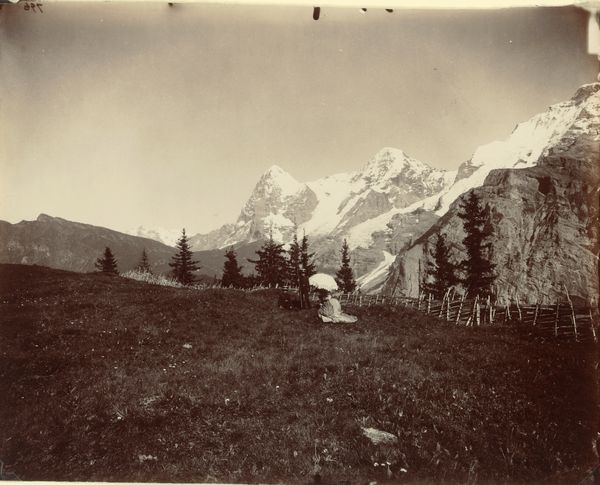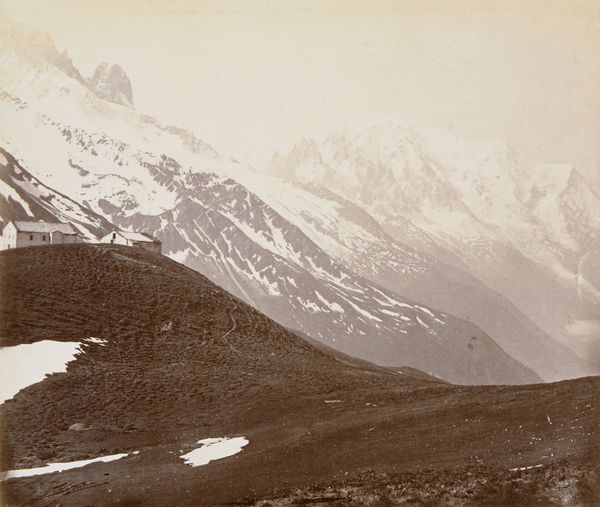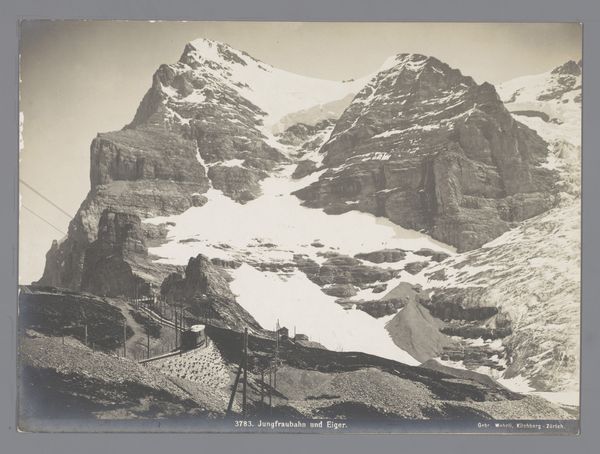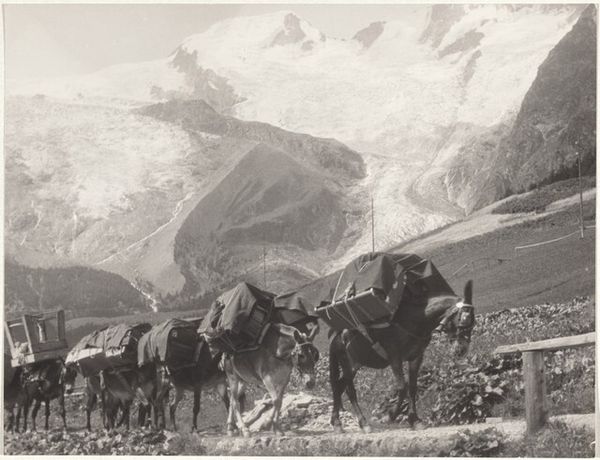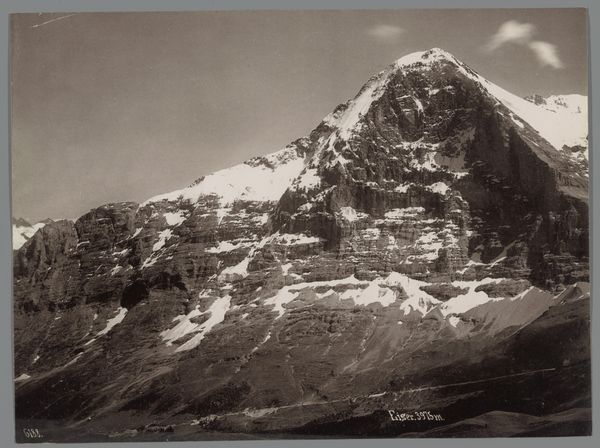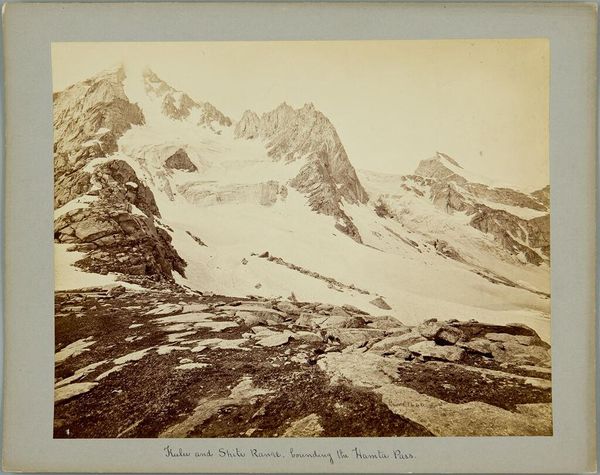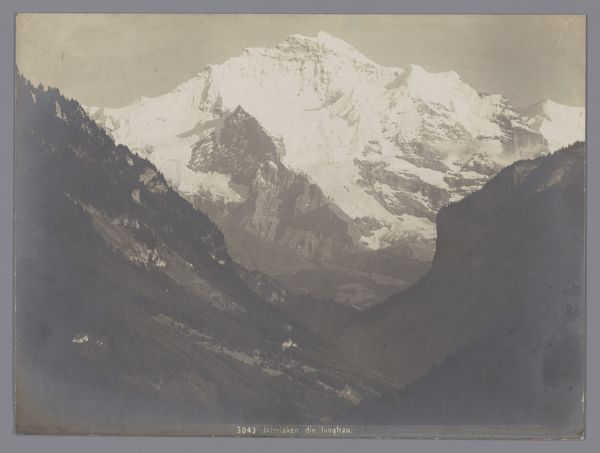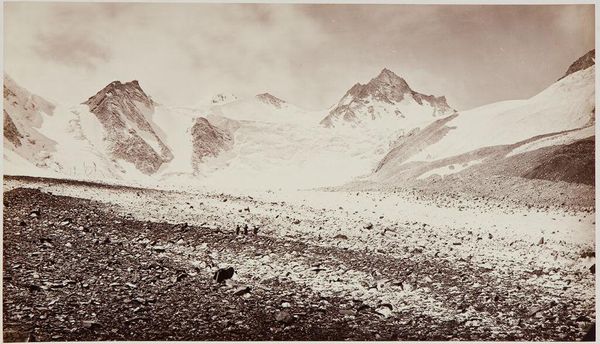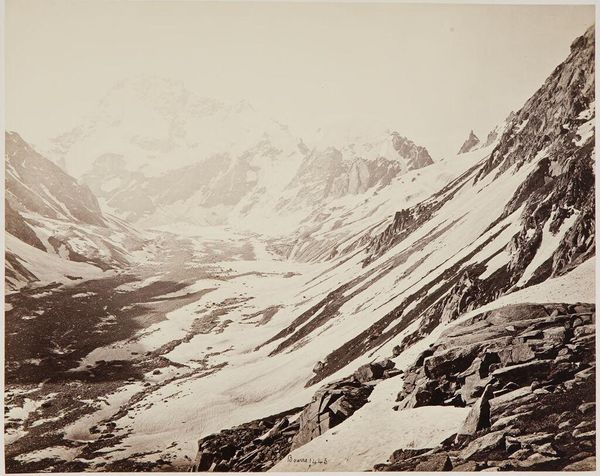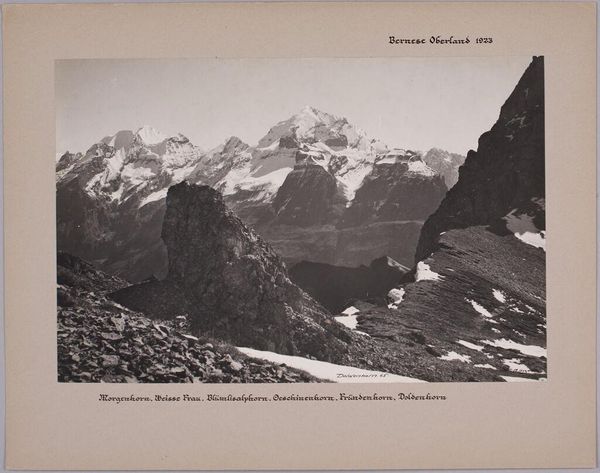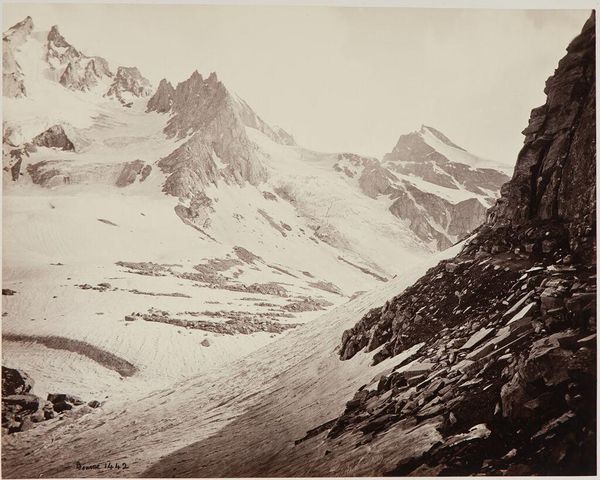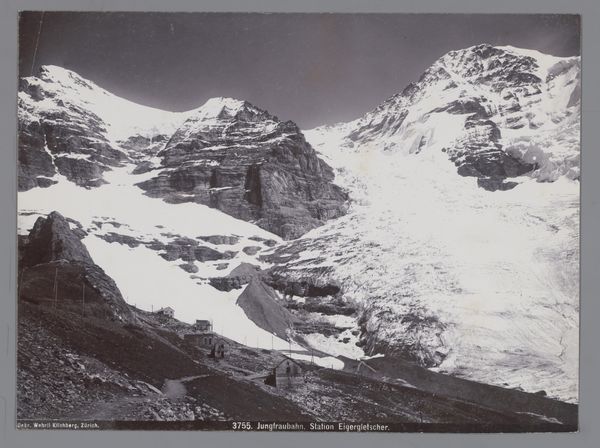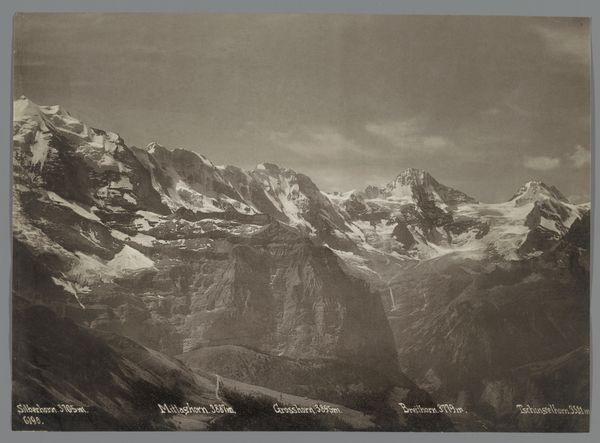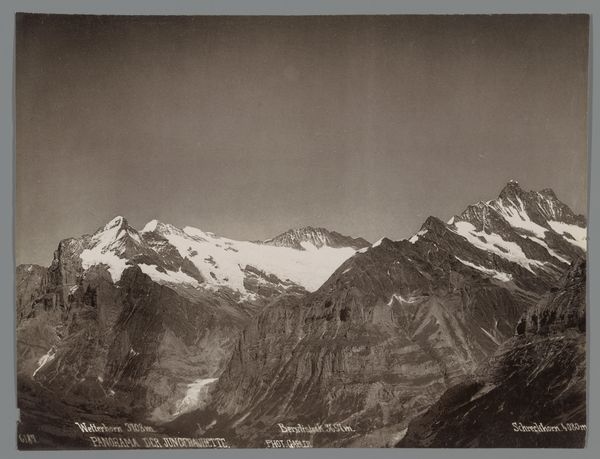
Koeien op de Kleine Scheidegg in het Berner Oberland, op de achtergrond de Eiger en de Mönch 1870s - 1880s
0:00
0:00
photography, gelatin-silver-print
#
landscape
#
photography
#
mountain
#
gelatin-silver-print
#
realism
Dimensions: height 212 mm, width 271 mm
Copyright: Rijks Museum: Open Domain
Curator: This photograph by Arthur Gabler, dating from the 1870s-1880s, captures "Cows on the Kleine Scheidegg in the Bernese Oberland, with the Eiger and Mönch in the Background." It's a gelatin silver print. Editor: Immediately striking is the contrast of scale, the hulking mountain dwarfing the tiny grazing cows. It lends a sense of tranquility, surprisingly. Curator: Precisely. Consider how the composition emphasizes the relationship between nature and the pastoral ideal. Gabler uses the sharp focus to draw our eyes upward towards the formidable peaks, anchoring the land. Notice, for example, how the tonal range directs us through the plane, even as we focus upon forms of geological presence. Editor: Yes, and thinking about its historical context, images like these were hugely popular, weren't they? Switzerland and other similar regions were seen as locations of beauty and retreat at a time of very accelerated industrialisation. Tourists flocked, with their pockets full of cash, searching for pristine alpine vistas. Curator: I agree completely. It demonstrates how photographic representation itself constructs perceptions of these places. We can examine its influence on notions of tourism and nationalism. What do these scenes represent to various groups: natives or colonials, natives and tourists alike. What impact has it had on how humans interact and build culture from nature? Editor: In many ways it encapsulates the power of photography to both reflect and construct a national and ideal identity of landscape at a time of profound transition and industrial change. Curator: It pushes us, I think, toward the need to address landscape itself as an expression, whether conscious or unconscious. This interplay is where the magic truly lives. Editor: Absolutely, that friction and synthesis between visual representation, social conditions, and political will makes studying this particular photograph deeply rewarding.
Comments
No comments
Be the first to comment and join the conversation on the ultimate creative platform.
